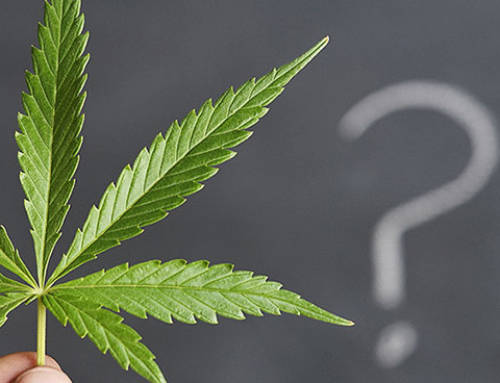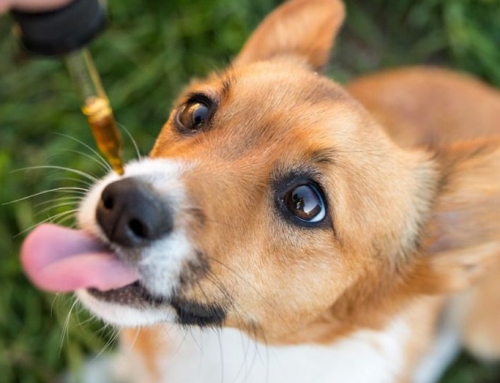As most everyone is aware, there has been a massive turnaround by the American public regarding their belief in and acceptance of cannabis. There are many scientific, medical and political reasons for this rapid about face; however, there are still a group of staunch holdouts who continue to believe the outdated, false hysteria regarding cannabis use. This article is written for each of you who are currently “on the fence” regarding your personal acceptance of cannabis and especially for those of you who remain afraid of cannabis use by your neighbors and community.
For those of you with negative feeling toward cannabis, what you might not realize, is that the human body is constantly producing its own “endogenous” cannabinoids (chemicals otherwise unique to the cannabis plant). These cannabinoids are technically referred to as “endocannabinoids” and behave in a nearly identical manner to the cannabinoids technically referred to as “phytocannabinoids” that are found in nature in the cannabis plant. Whether formed in your brain or ingested from a plant source, cannabinoids fit neatly into a series of specialized receptors located throughout the human body, with their greatest concentration in the hippocampus (which regulates memory), the cerebral cortex (cognition), the cerebellum (motor coordination), the basal ganglia (movement), the hypothalamus (appetite), and the amygdala (emotions). Cannabinoid receptors are similarly found in “every animal species down to the sponge,” Dr. Donald Abrams, chief of hematology / oncology at San Francisco General Hospital and a leading medical marijuana researcher, told VICE’s Krishna Andavolu. Dr. Abrams was speaking to Andavolu about cannabinoid receptors for the first episode of Weediquette, a show about all things weed that aired on the TV channel, VICELAND. The aforementioned episode explores the potential therapeutic benefits of THC in children with serious illnesses. When compared to the side effects of other drugs commonly prescribed for childhood illness, the decision of parents to administer cannabis oil to their sick children seems to many the better choice.
First identified in the late 1980s, the endocannabinoid system consists of CB1 receptors predominantly located in the nervous system, connective tissues, testicles, glands, and organs; and CB2 receptors, primarily found in the immune system and also present in the spleen, liver, heart, kidneys, bones, blood vessels, lymph cells, endocrine glands, and reproductive organs as well as many other types of common g-protein coupled receptors located throughout the brain and body.
These receptors can be stimulated and modulated by compounds called endocannabinoids that are:
● Produced naturally in the body, like anandamide or 2-AG, or
● Ingested from a set of closely-related botanically-based phytocannabinoids like tetrahydrocannabinol (THC) or cannabidiol (CBD), or
● Ingested from synthetic cannabinoids produced in a laboratory.
After binding to receptors in the body that fit them like a lock fits a key, these endo, phyto, and synthetic cannabinoids all produce a wide range of physiological effects, altering everything from blood pressure to pain response to memory to appetite to “consciousness.” Think of the endocannabinoid system as your body’s “root level” operating system—a kind of central processing unit that regulates and alters the functioning of many other important systems and keeps them in balance.

Martin Lee, author of Smoke Signals: A Social History of Marijuana, notes in his book that cannabinoid receptors are more abundant in the brain than any other type of neurotransmitter receptor and “function as subtle sensing devices, tiny vibrating scanners perpetually primed to pick up biochemical cues that flow through fluids surrounding each cell… When tickled by THC or its endogenous cousins, these receptors trigger a cascade of biochemical changes on a cellular level that puts the brakes on excessive physiological activity. Endocannabinoids are the only neurotransmitters that engage in such ‘retrograde signaling,’ a form of intracellular communication that inhibits immune response, reduces inflammation, relaxes musculature, lowers blood pressure, dilates bronchial passages, and normalizes overstimulated nerves. Retrograde signaling serves as an inhibitory feedback mechanism that tells other neurotransmitters to ‘cool it’ when they are firing too fast.”
The system’s discovery kick-started a profound sea change in medical science’s understanding of neurological functioning. In a 2006 study published in Pharmacological Review, National Institute of Health researcher Pal Pacher, M.D., Ph.D explained the cognitive leap that took place. “In the past decade, the endocannabinoid system has been implicated in a growing number of physiological functions, both in the central and peripheral nervous systems and in peripheral organs,” Dr. Palcher wrote. “Modulating the activity of the endocannabinoid system turned out to hold therapeutic promise in a wide range of disparate diseases and pathological conditions, ranging from mood and anxiety disorders, movement disorders such as Parkinson’s and Huntington’s disease, neuropathic pain, multiple sclerosis and spinal cord injury, to cancer, atherosclerosis, myocardial infarction, stroke, hypertension, glaucoma, obesity/metabolic syndrome, and osteoporosis, to name just a few.”
We completely understand how a tradition of cannabis fear, even though most of those fears were perpetuated based on lies from an earlier century, can influence current opinions. The best opinions, however, are based on facts. While many cannabis proponents will be quick to point out all of the impressive medical studies adding up to the safety and efficacy of cannabis, the more fundamental fact is that each of your neighbors who fear cannabis naturally produces the very compounds that cause their fear and that modern science has been very strong in demonstrating that better health and happiness comes from higher levels of circulating cannabinoids. And in the end isn’t the fear or cancer, crippling seizures or a life full of chronic pain far worse than a plant that produces the same health promotive compounds that your very own body creates and relies on for balance and health? Cannabis should be allowed to take its rightful place alongside many safe, health promotive substances as one option to improve happiness and productivity of our communities.










